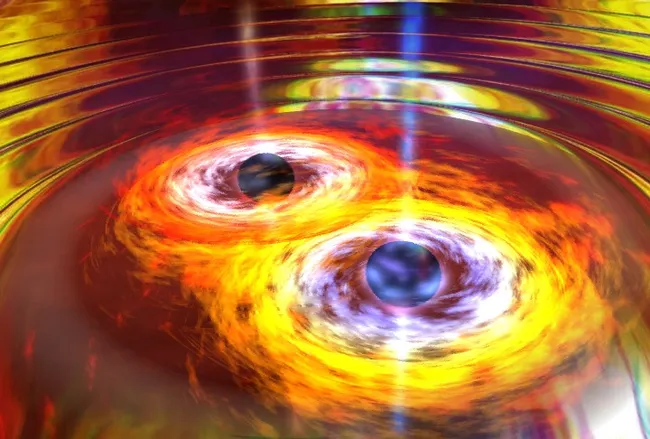“NASA black hole visualization, black hole simulation, gravitational lensing, photon ring, space exploration, astrophysics, educational science content, Doppler beaming effect, Event Horizon Telescope, Chandra X-ray Observatory”
“Explore the depths of the universe with NASA’s latest black hole visualization. This groundbreaking simulation takes you beyond the event horizon, showcasing phenomena like gravitational lensing and the photon ring with stunning accuracy. Dive into the details of this visual masterpiece and its implications for future astronomical research.”

Introduction
NASA has once again pushed the boundaries of space exploration and public engagement with its latest release—a breathtaking visualization of a black hole. This groundbreaking project allows viewers to venture beyond the event horizon and experience the mysterious cosmos as never before. This article delves into the details of this visualization, exploring how it was created, the scientific principles it elucidates, and the implications it holds for future astronomical research.
Unveiling the Mystery: What the Visualization Shows
Black holes, regions of space where gravity is so intense that no light can escape, have long captured the imagination of scientists and the public alike. NASA’s visualization uniquely represents the dynamic environment around a black hole. It illustrates how the gravitational forces distort and magnify the light from stars and gas particles as they spiral towards this cosmic trap.
The visualization is based on extensive data and simulations that mimic the behaviors of particles and light near a black hole. It captures phenomena such as gravitational lensing, where light bends around the black hole creating a ring-like structure known as the ‘photon ring’. The details are so precise that they allow viewers to observe the Doppler beaming effect—where objects moving towards the observer appear brighter than those moving away.
The Scientific Backbone: Data and Technology
The creation of this visualization was no small feat. It required the collaboration of astrophysicists, computer scientists, and visual artists, using data from telescopes like the Chandra X-ray Observatory and the Event Horizon Telescope. The team used state-of-the-art computational models to simulate the physical conditions near a black hole, integrating general relativity and quantum mechanics.
Advanced rendering techniques were then applied to translate these complex simulations into a visual format that is both scientifically accurate and visually engaging. This approach not only provides a more intuitive understanding of black hole dynamics but also sets a new standard for educational science content.
Educational and Scientific Implications
One of the primary goals of this visualization is to educate the public and inspire future astronomers. By turning complex astrophysical concepts into engaging visuals, NASA hopes to spark curiosity and encourage educational pursuits in the field of space science. For students and educators, this tool provides a vivid textbook example of relativistic effects in action, far beyond the static images typically found in academic materials.
For the scientific community, the visualization serves as a benchmark for testing theoretical models against observable phenomena. By comparing these visualizations with real astronomical data, scientists can refine their theories about the nature of space, time, and gravity. This ongoing feedback loop between theoretical predictions and observational data is vital for advancing our understanding of the universe.
Future Directions and Exploration
The release of the black hole visualization is just the beginning. NASA plans to expand this project to include more complex scenarios and interactions, such as the collision of black holes or the behavior of gas clouds under extreme gravitational forces. Each iteration not only enhances our understanding of black holes but also tests the limits of our current scientific models.
Furthermore, this visualization technique could be adapted to study other astronomical phenomena. For instance, the dynamics of neutron stars, supernovae, or even the early universe shortly after the Big Bang could be visualized using similar methods. This could open up new avenues for public engagement and scientific research, providing a clearer picture of the most enigmatic aspects of our universe.
Conclusion
NASA’s new black hole visualization represents a significant leap forward in our ability to depict and understand one of the most enigmatic phenomena in the cosmos. By blending science, technology, and art, this project not only enhances our comprehension of black holes but also democratizes access to cutting-edge science. As we stand on the brink of these cosmic giants, we are reminded of the vastness of the universe and the endless possibilities for discovery that lie ahead. With each new image and simulation, we are one step closer to unraveling the cosmic mysteries that have puzzled humanity for centuries.
Read More-
- Curious Asteroid Selam, Spotted by NASA Lucy Spacecraft, Is a Cosmic Toddler
- Groundbreaking NASA Study Reveals New Insights into Global River Systems
- NASA Fermi Reveals the Universe in New E-Book
- NASA Artemis Generation: Cultivating the Moon Trees Across America









